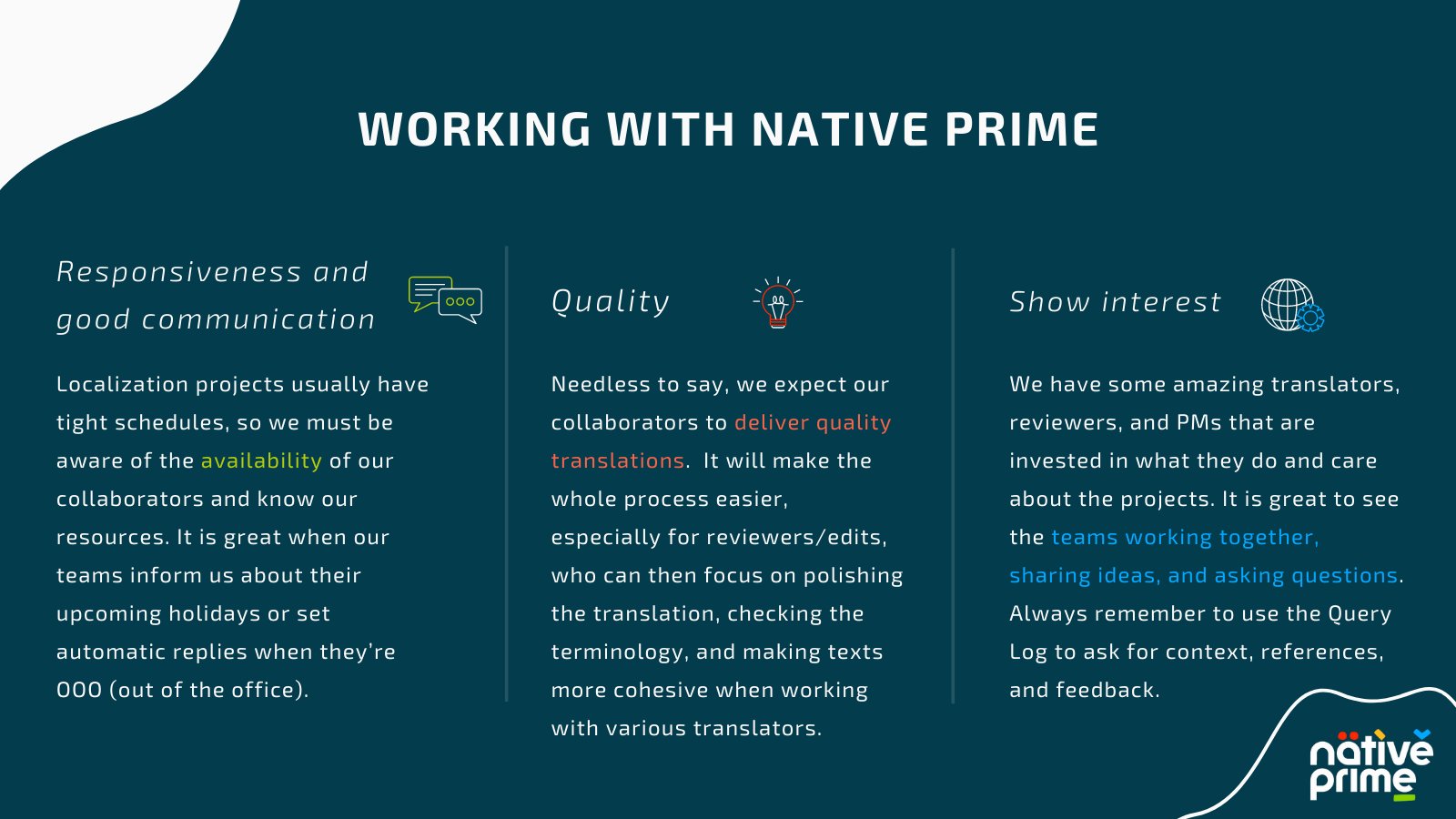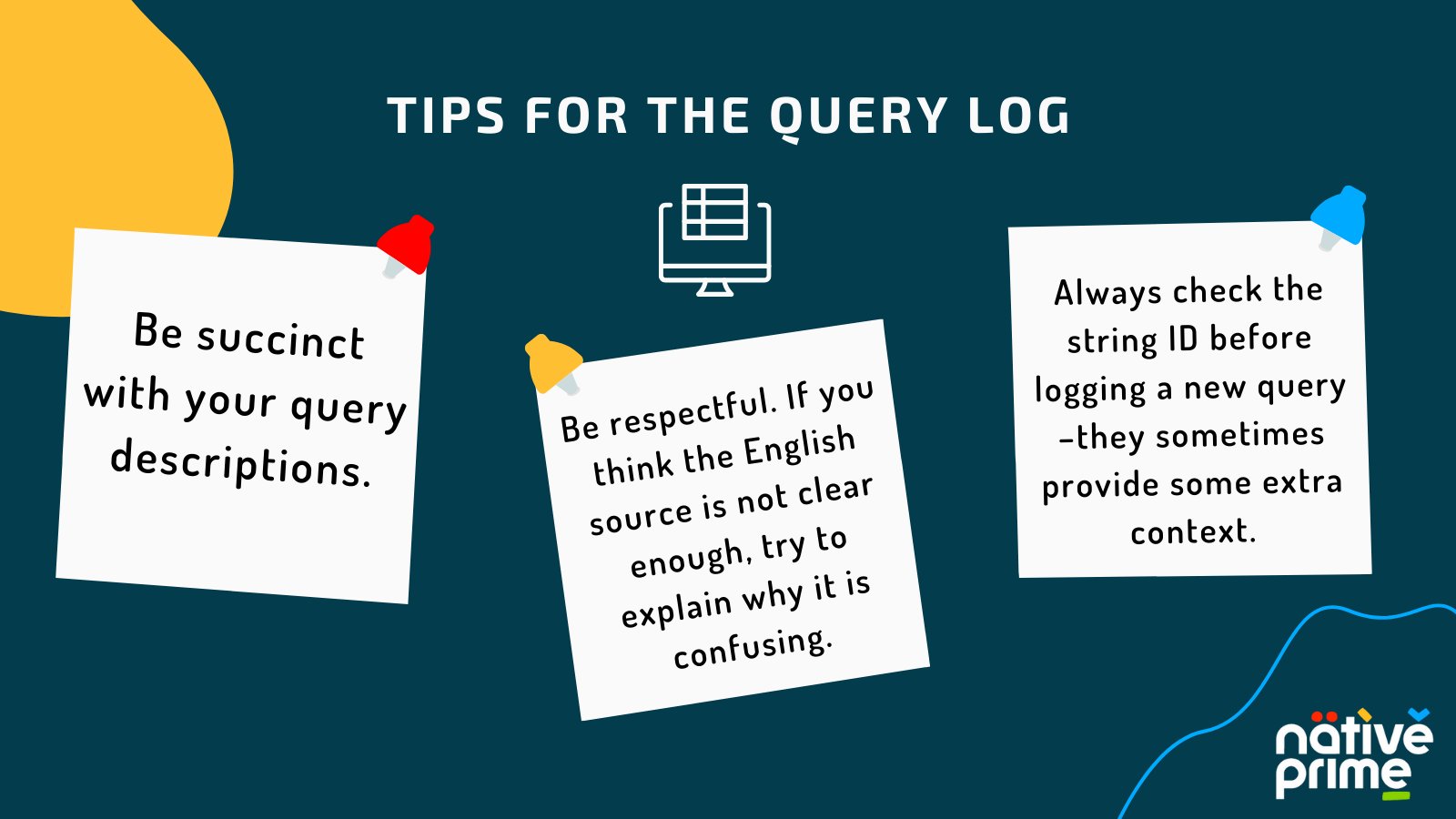Working with us
February 11, 2022
Hello everyone!
We’re always on the lookout for new collaborators! Do you want to know what we expect from you? Keep reading.
Applications
Like any other company, we receive many job/collaboration applications, so sometimes we don’t have time to thoroughly read every one of them. So, keep this in mind when sending us your application:
The simpler, the better ✅
When we’re in a hurry, we tend to skim-read through the applications to pick up only the significant details we’re looking for. Here you have some details you should include in your application:
Please, always state your language combination, preferably somewhere visible – such as the email subject or the title of your CV.
Translation test
We always ask all potential collaborators to complete a short translation test to see if they match our quality standards.
To make sure you let your skills shine in the test, follow these steps when doing our translation test:
- Leave tons of comments about your decisions
- Try to use idiomatic formulas
- Let your creativity run free while being loyal to the source
- Always run the spellcheck before delivering! F7 on Excel, it’s that easy. 😊
- Deliver on time
We hope this helps. We really want talents working with us.
Collaborating with us
If we get a project that seems like a good fit for you, one of our PMs will get in touch. 📬 We’ll check your availability and once everything is set, it’s time to start!
During a localization project, we face many challenges. Ultimately, we need to deliver the assets on time and with the best quality. To achieve this, it is paramount to follow our workflow in which translators play an important role, of course.
These are 3 key aspects we value in our translators:
- Responsiveness and good communication: Localization projects usually have tight schedules, so we must be aware of the availability of our collaborators so that we can plan accordingly. We appreciate it when our teams let us know in advance about their upcoming holidays or set automatic replies when they’re away.
- Quality: Needless to say, we expect our collaborators to deliver high-quality translations. It will make the whole process easier, especially for reviewers/edits, who can then focus on polishing the translation, checking the terminology, and making texts more cohesive when working with various translators.
- Show interest: We have some amazing translators, reviewers, and PMs that get quite involved in what they do and care about the projects. It is great to see teams working together, sharing ideas, and asking questions. Always remember to use the Query Log to ask for context, references, and feedback.
Query log
A key tool for every localization project. The Query Log is a shared document where teams write down their questions about the project at hand. Here we ask dev teams for more context, we inform about possible typos in the source, and try to decipher those obscure placeholders we often encounter in game localization.
Check out the pic below for some tips when working on the Query Log. Keep them in mind!
Remember to count on your PM and never hesitate to share your doubts or concerns about potential issues that could be controversial in your culture/language, such as a particular term or a historical reference.
We hope this article was useful to you. Read you soon!
Categorised in: Articles




